Have you seen resin earrings and paperweights that look like drips of color sinking in clear epoxy? Then you’ve seen what happens when you use alcohol ink in epoxy. Alcohol inks can add bright colors and patterns to your resin crafts and jewelry.
While they are fun to create with, alcohol inks aren’t like traditional resin colors. You need to use special techniques to get them to work.
Here are three things you need to know first:
1. Not all alcohol inks work in resin.
Some alcohol ink colors will change colors, while others will disappear altogether. Colors in the pink and red range are notorious for this. You’ll add them to clear epoxy only to find a few minutes later that they’re gone.
To ensure this doesn’t happen to you, use alcohol ink specifically for epoxy. This will make certain your colors stay vibrant after your resin cures.
2. Alcohol inks are flammable.
As the name implies, resin colors are alcohol-based. That means they can start a fire if exposed to a flame. You should be careful if you use a torch for popping bubbles on the resin surface. Better yet, use a heat gun to remove resin bubbles. You’ll lessen your fire risk since it doesn’t use a flame.
3. Alcohol ink can make your epoxy cure soft.
Don’t get carried away when using these colors. There can be such a thing as too much alcohol ink in epoxy. That can make your resin projects cure bendy, which isn’t a fixable problem.
What alcohol inks should you use?
The ICE resin tints and the Jacquard white Pinata alcohol ink will give you beautiful and consistent results in your epoxy projects. The ICE resin tints are specially formulated to color resin and won’t fade or change colors. The Pinata white alcohol ink works best to make petri patterns in resin. (More on that in a minute.)
What are the ways you can use alcohol ink in resin?
Use the Resin Obsession super clear resin? It’s a fantastic resin to use in molds when you’re pouring three ounces or less of resin at once.
💡 Pro tip: If resin mixing is new to you or you want more help, you’ll want to read measuring and mixing resin in five easy steps.
Option 1: Mix alcohol inks with resin
Alcohol ink can give a pretty, transparent color to your epoxy.
First, mix clear epoxy, then add a drop or two of alcohol ink.
Combine thoroughly until the color is mixed evenly.
💡 Pro tip: Add less color than you think you need. You can always make it darker.
Pour the colored resin into your mold or bezel and let cure.
Option 2: Drip alcohol ink onto wet resin
One of the cool things about alcohol inks for resin is that they want to stay on a resin surface. So instead of sinking when added to epoxy, alcohol ink spreads horizontally. That means you can add drops of ink to a wet resin surface to make interesting patterns.
Mix clear resin and add it to a mold or jewelry bezel.
Then, add alcohol ink to the epoxy surface, letting it spread.
💡 Pro tip: The alcohol ink will make a new color where the two colors meet.
Option 3: Drip alcohol ink onto wet resin, alternating white and colored inks.
With this method, you’ll add white and colored alcohol ink to create drops of color throughout your resin. This technique, also known as the Petri technique, is a fun way to create a look of depth in your resin.
Mix clear resin, then add to a mold.
Add the colored ink to the surface.
Then, add white ink. Alternate back and forth a few times, depending on the depth of your resin pour. The more ink you add, the less clear epoxy you’ll have in your final resin casting.
💡 Pro tip: The deeper the mold, the more inks you can add, and the more the inks will drop.
Results of using alcohol ink in epoxy
Option 1 created a beautifully transparent yellow that matches the theme of this sun mold.
Option 2 created a unique pair of earrings that are complementary but don’t exactly match. I like them that way. Matchy-matchy is so dull.
Option 3 created colors that blended with the white ink. These were made with a checkers piece mold, so my color choices weren’t the best, but I like them anyways. Instead of using them as game pieces, you can add magnets or push pins to the back to use them on a bulletin board.
Want to learn more about epoxy resin without making a bunch of mistakes in the process?
It’s why I wrote the beginner ebook Resin Fundamentals. I’ve condensed my 17 years of resin experience into the important steps to be successful with resin from the first day. Buy the PDF book now, and it’s yours to download in minutes. Get up to resin expert status in only an afternoon.
Unpublished Blog Posts of Resin Obsession, LLC © 2023 Resin Obsession, LLC


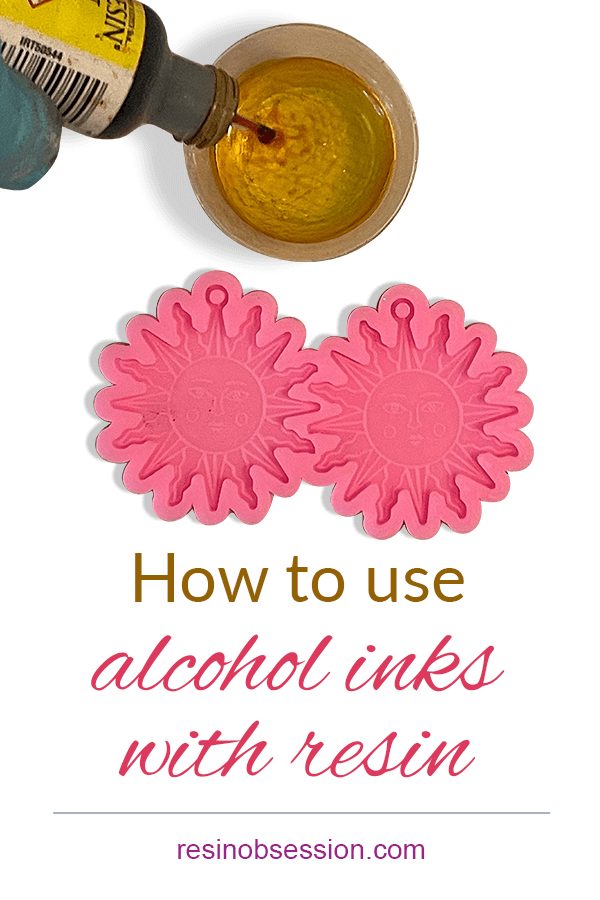
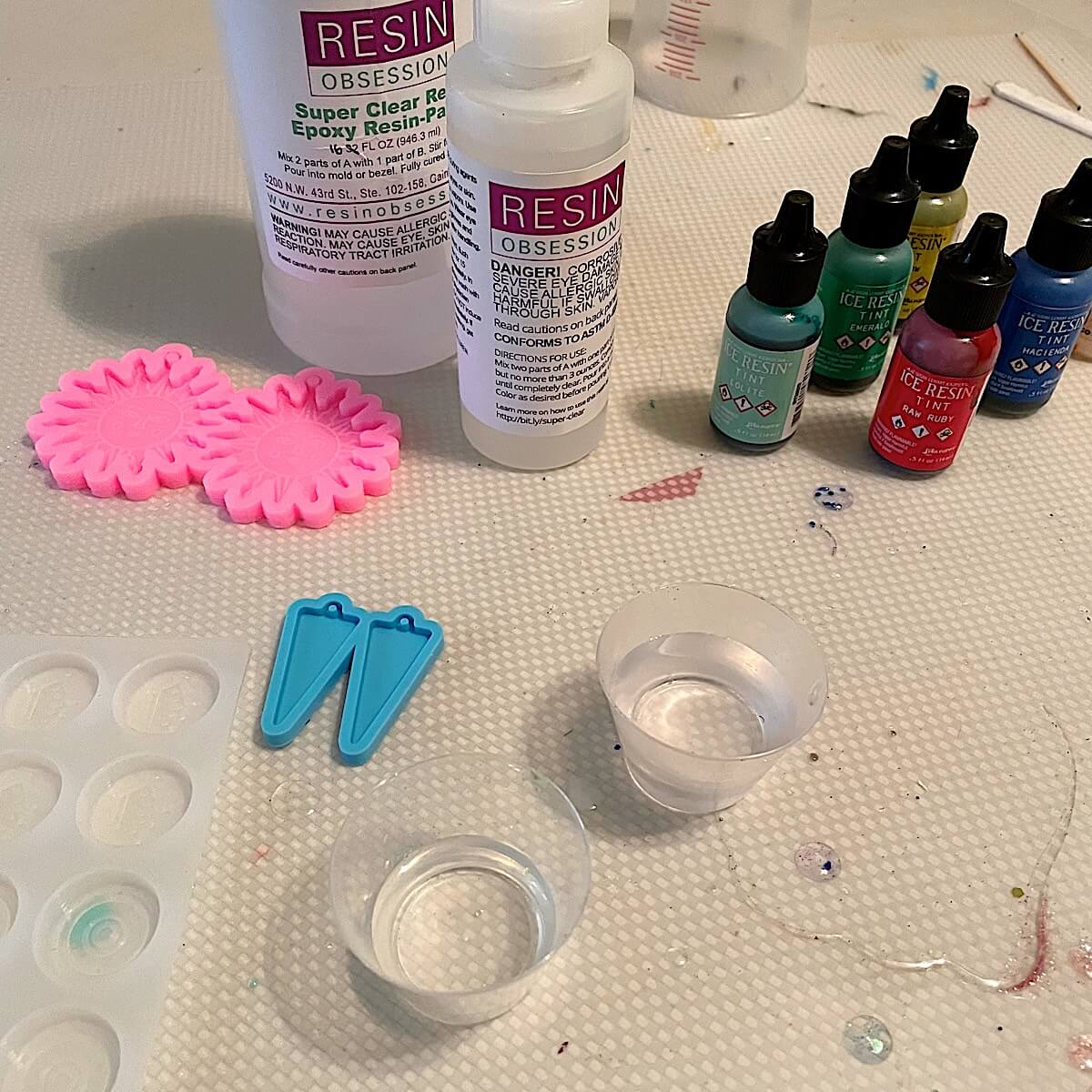
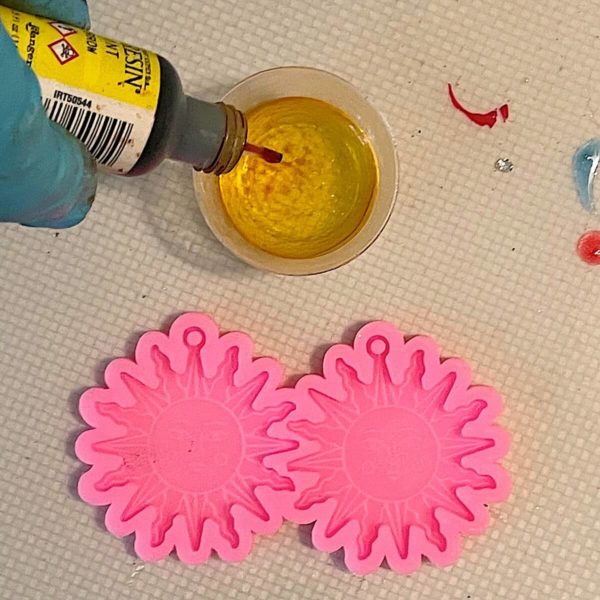
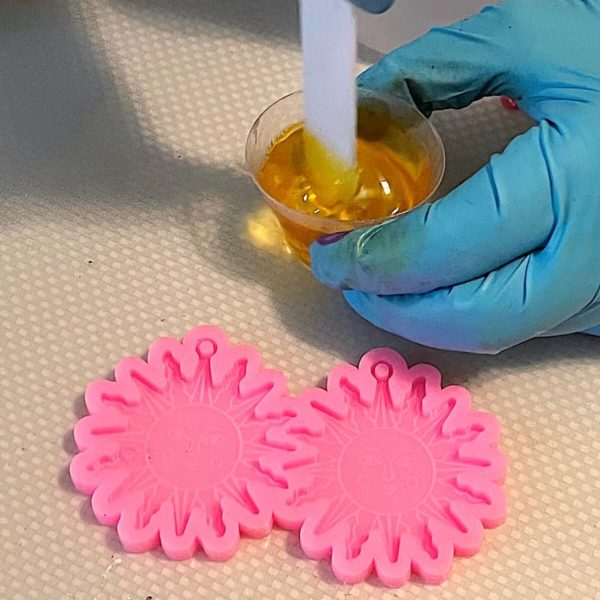
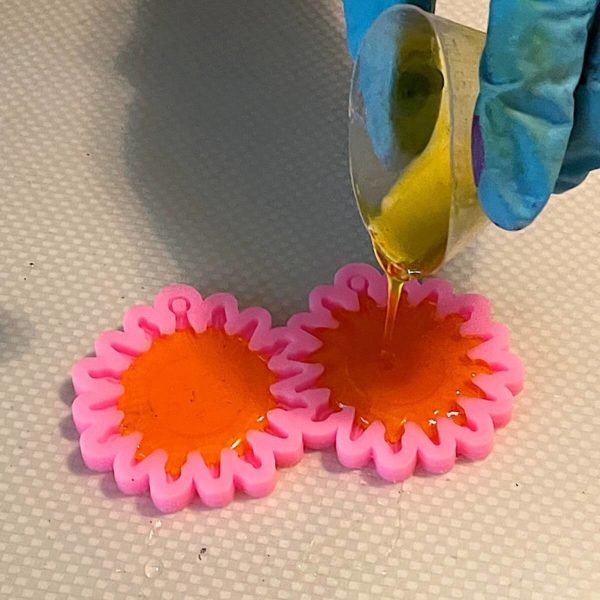
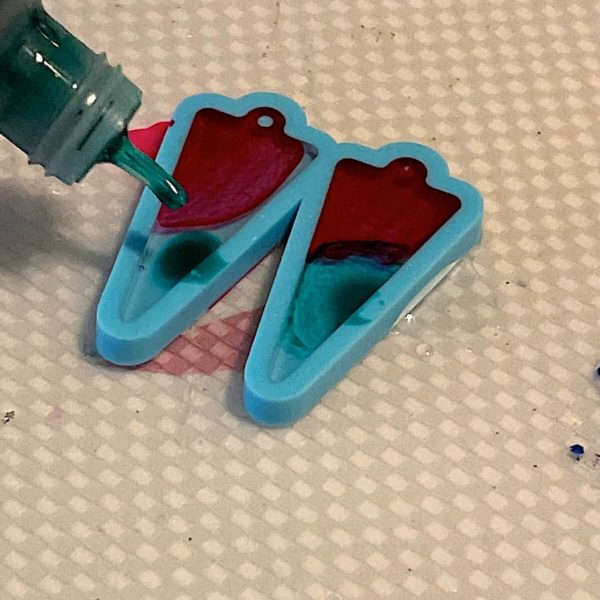
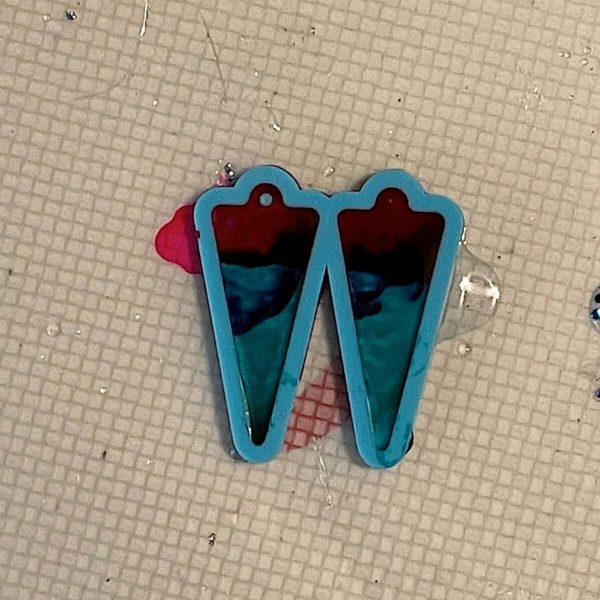
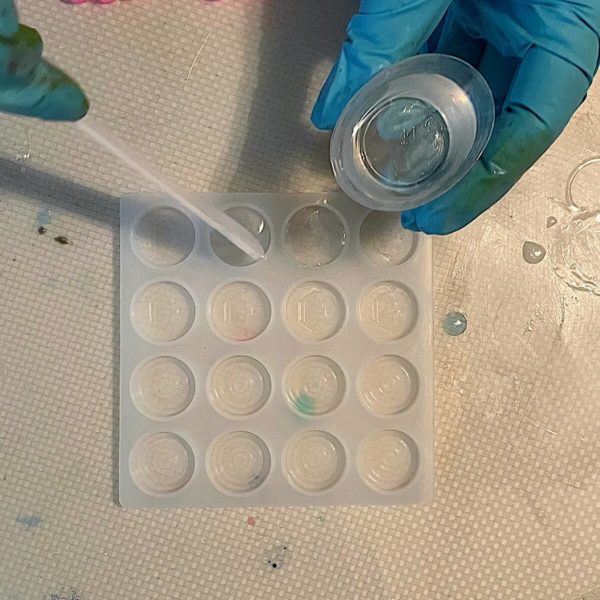
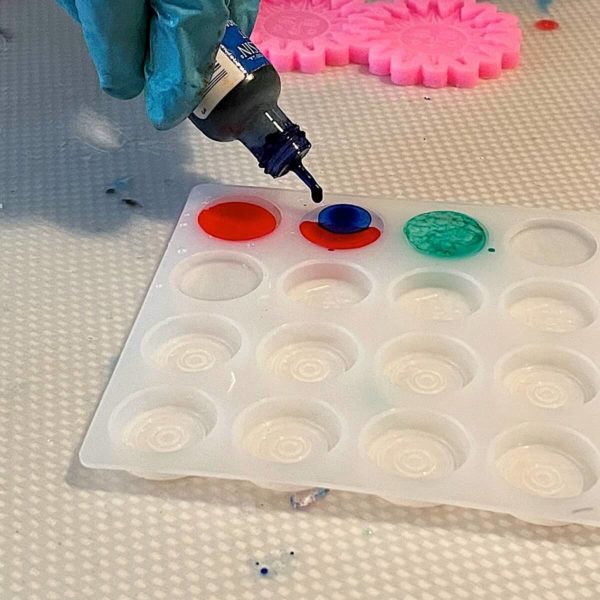
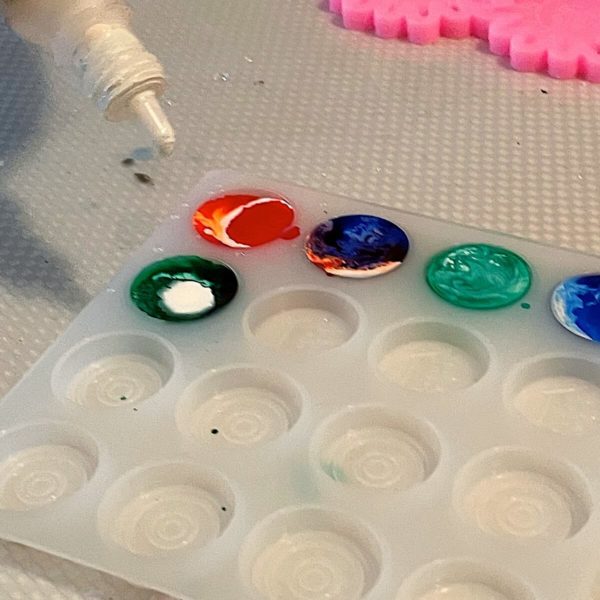
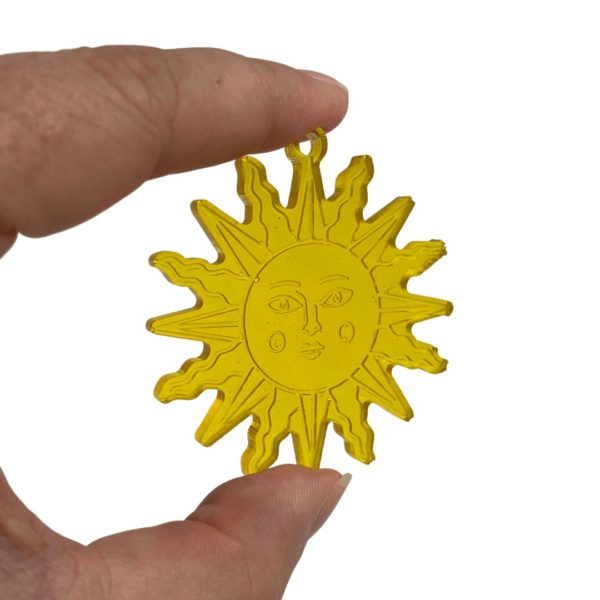
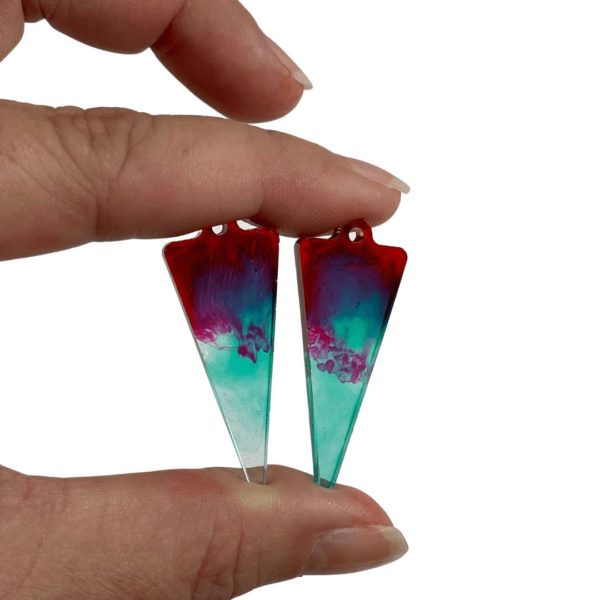
What is a good DIY material for molds?
Or can I just spray any mold with spray cooking oil?
Hi Brenda! I love that you’re looking to save money when crafting with resin. That’s the sign of a true artist! Before you try cooking spray and other non-traditional molding materials, I urge you to read these articles first:
https://www.resinobsession.com/resin-frequently-asked-questions/resin-mold-release/
https://www.resinobsession.com/molds-mold-making/casting-resin-in-a-soap-mold/
Hello, I have been using your pinata alcohol ink to dye my resin but when I use the Amazing white casting resin the ink extremely darkens the next few days. I have done many tests and wasted a lot of money and even if I use the exact same amount of ink and resin a few days later the two same items change to two different colors. what is happening here? Can I stop the color from darkening over a few days? I need to mix a color that stays the same as when i pour it.
Hi Rob, I’m sorry this is happening to you. Unfortunately, the Amazing Casting resin is very crabby about taking colors. These colors are specifically designed to color that resin type: https://shop.resinobsession.com/products/alumilite-liquid-transparent-dye